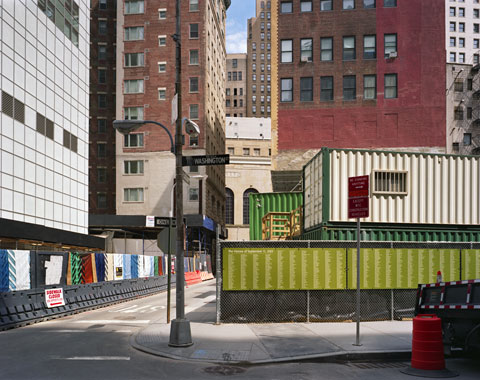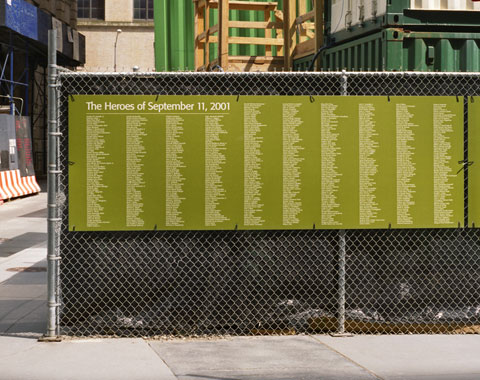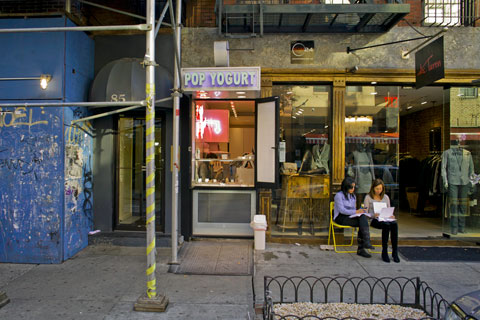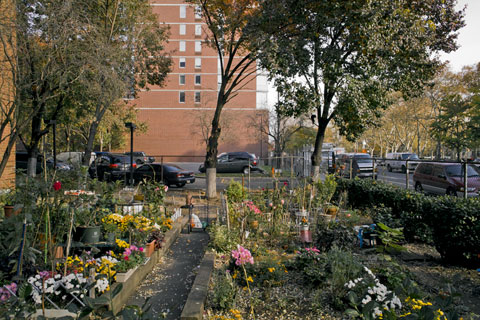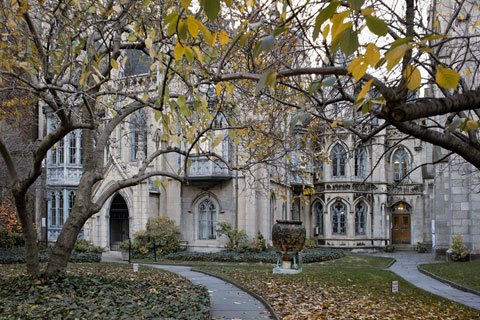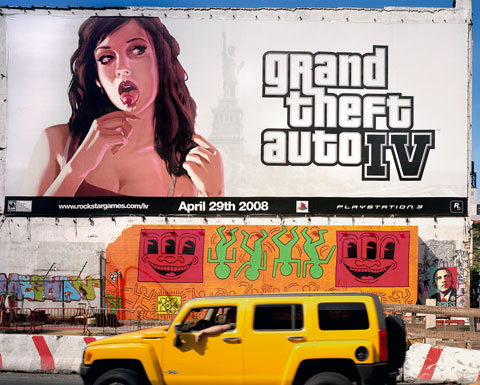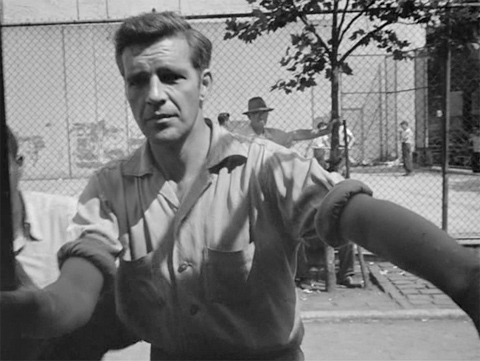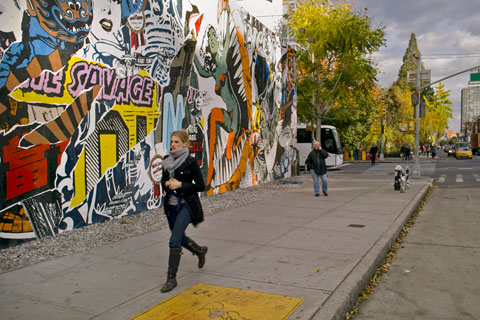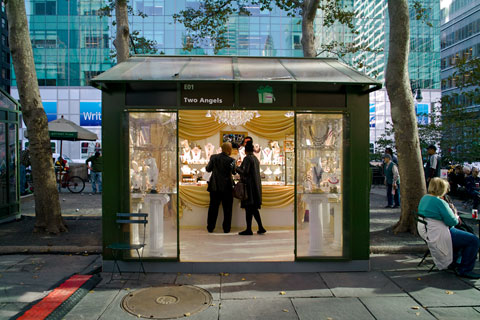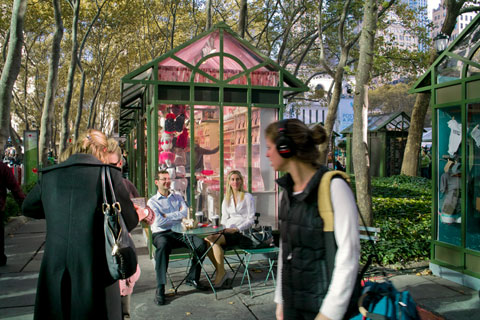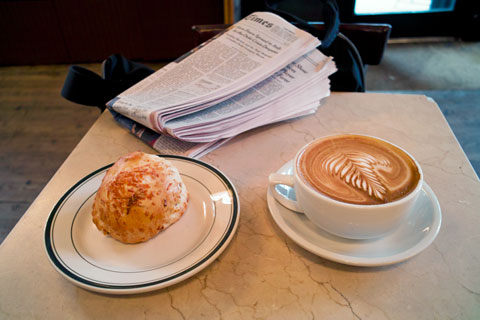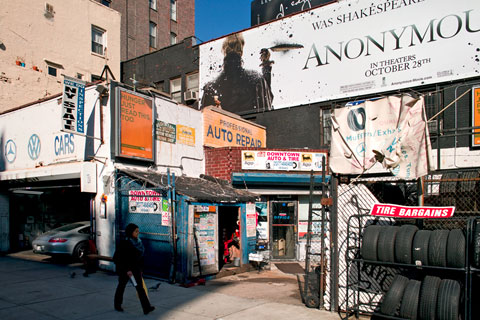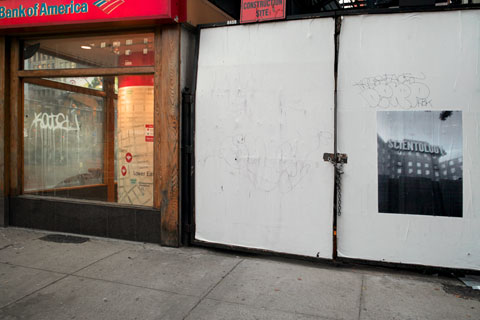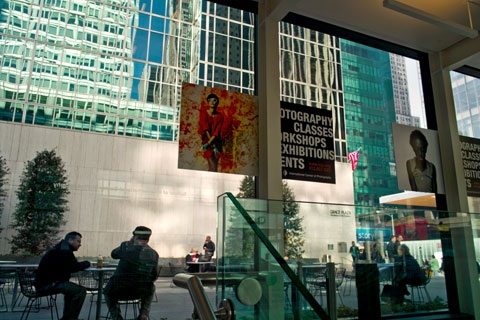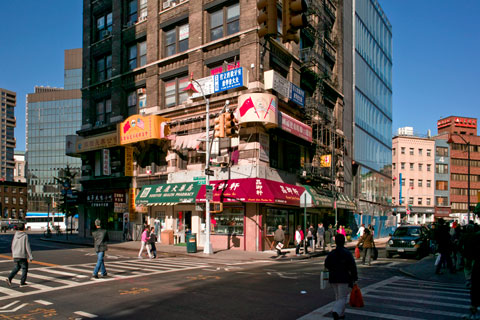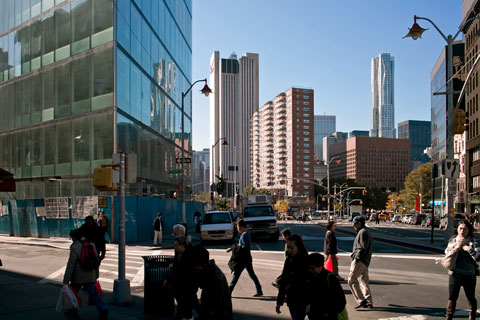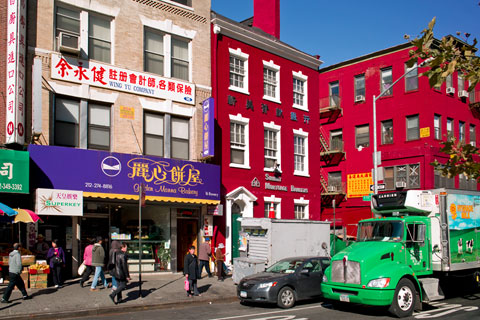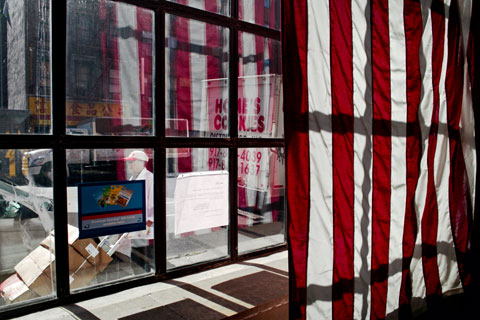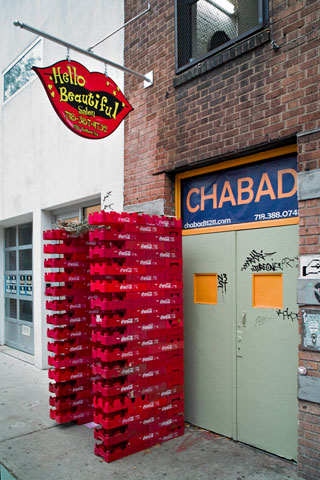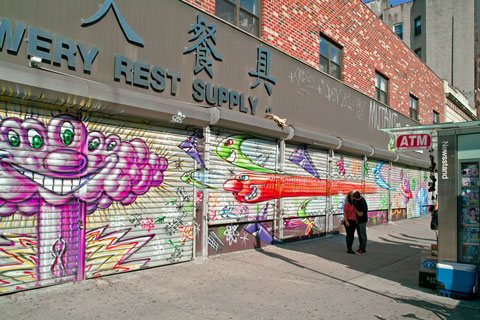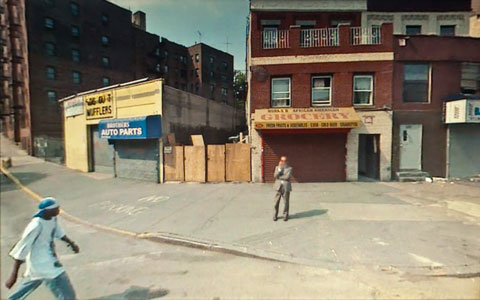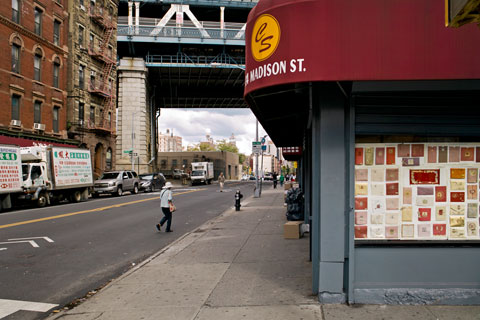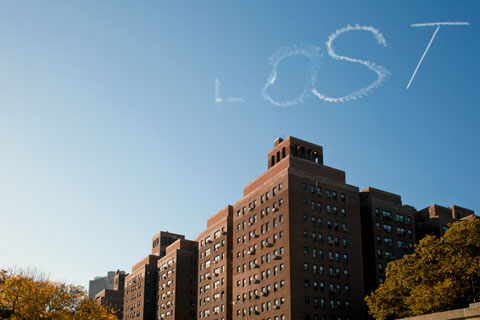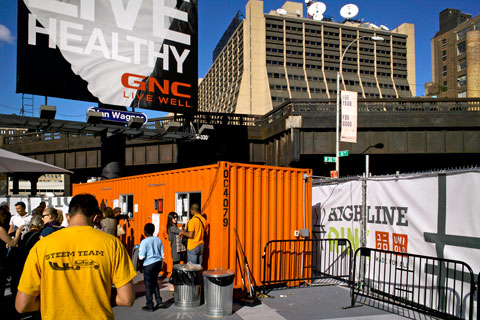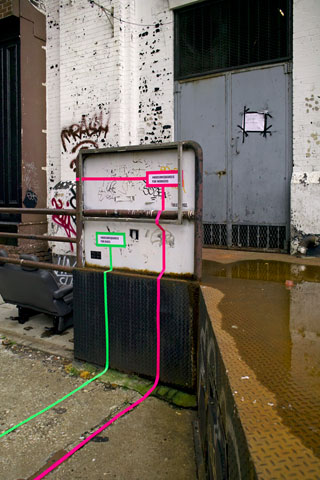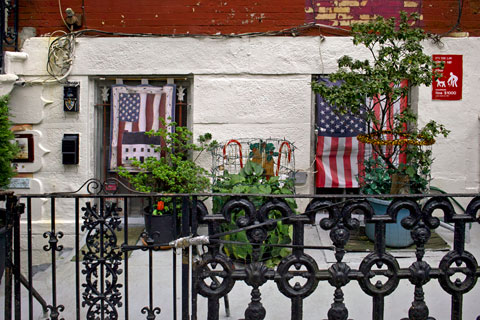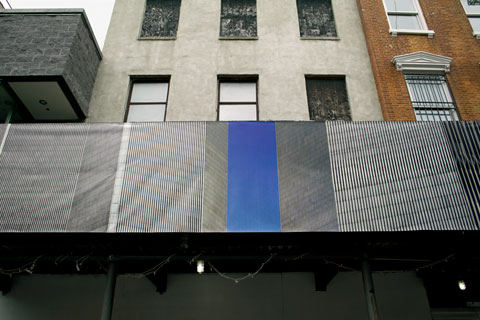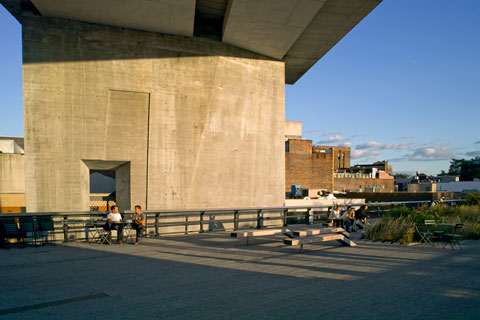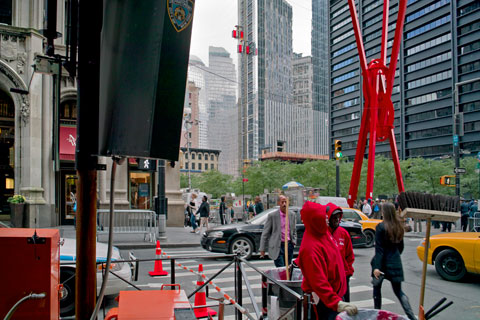
Broadway and Cedar Street — © Brian Rose
I went downtown yesterday to add more photographs to my ongoing WTC series. I took the 4×5 view camera, which now requires carrying individual holders for the film instead of the pre-packaged paper envelopes that I used for about 15 years. Both Fujifilm and Kodak have dropped those from the lineup, now that digital is pre-eminent, and Fuji has stopped making 4×5 film across the board.
I took the subway to Wall Street and walked a block or two up to Zuccotti Park, the primary location of Occupy Wall Street, the protest movement that has spawned similar actions in other cities across the country. I went with the intention of including the demonstration in some of my photographs, but not to attempt to document it per se. After all, the place is crawling with photojournalists and the media in general. My approach, as usual, is more of a meta-documentation of events as they intersect with my main task, photographing around ground zero and the rising towers, particularly 1 WTC. More than once, other photographers looked at my equipment and referred to me as “a real photographer.”
From across Broadway I could readily see the police presence on the periphery of Zuccotti Park–various barriers and cones directed traffic on the street–which continued to flow unimpeded. Every few moments a double decker red tour bus would pass by the park and tourists’ heads would swivel in the direction of the demonstration. I set up my camera on Broadway and did a photograph looking toward the park with a brilliantly red Mark DiSuvero sculpture towering over it. The new glass buildings in the background reflected sky and each other creating a confusing constructivist composition. Red construction hoists slid up and down 4 WTC as if intended to complement the color scheme.
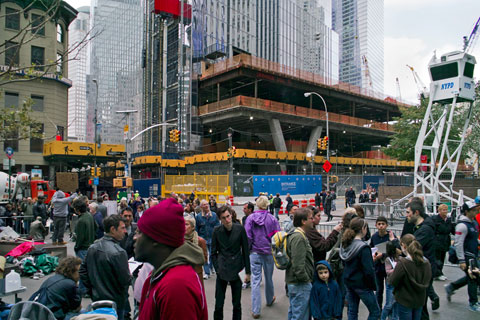
Trinity Place and Liberty Street — © Brian Rose
I only did three or four photographs in and around the park, but I was there about two hours, setting up the camera, and then waiting for things to happen. I talked to a number of people, some active participants, some tourists, others just passing through, but curious to see what was going on. As expected there are plenty of “professional activists,” the people who come to any and every march or protest aimed at established power. So, the casual observer might assume that the crowd is dominated by Marxist anti-U.S. fringe groups.
If this were actually the case, however, this demonstration would have been long over. It’s hard to get a handle on the composition of the crowd, but clearly, it is more diverse than usual for these kinds of things. At one point while I was there a contingent of union hard hats from the WTC construction site paraded through the park carrying an American flag. Another group of perhaps 20 marchers–young people, white and black–circled the park chanting “Stop, stop and frisk!” while almost the same number of NYPD blue shirts strolled along behind pied piper style. This was obviously an adjunct protest to the main Wall Street occupation demonstration. I talked briefly with a construction worker, a British tourist who was concerned about the economic future of Europe, and a person who had come specifically to see for himself what was going on. It’s the interest from outside the core group of demonstrators that seems to give this rolling event momentum and importance.
I set my camera in the northwest quadrant of the park facing Liberty and Trinity Place with demonstrators and the curious in the foreground, and the sky filled with glass skyscrapers in the background. It was particularly satisfying to put my tripod down right at this spot where I had been accosted by security guards a few years ago who informed me that Zucotti Park–while open to the public 24 hours a day– was, in fact, a private park, and tripods were not allowed. The park–really a paved public square–is the product of one of these zoning deals New York City is so fond of. Developers get more height or floor area in exchange for creating a public amenity, often of dubious merit. In this case, the park is definitely a welcome amenity among the forest of skyscrapers of lower Manhattan, and the city sees it as a win-win, since they do not have to take care of it–Brookfield, the owner, maintains the space. So, we have a public square which must be open to everyone round the clock, in which tripods are not usually allowed, now occupied by 500 demonstrators and their NYPD chaperones. The irony of it all is delicious.
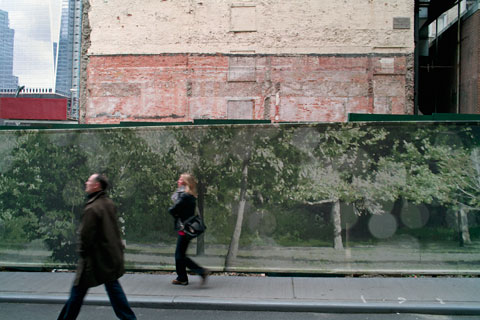
Cedar Street — © Brian Rose
Speaking of ironies. The crowd in Zuccotti Park is comprised largely of local New Yorkers, many of whom are undoubtedly Jewish as evidenced by a portable Sukkah to honor the current holiday set up among various other tents and tarps. The right wing talking point that Occupy Wall Street is anti-semitic is laughable. The reason they link a Wall Street protest to Jews is because they are under the mistaken notion that the nation’s banks are run by Jews, which is demonstrably untrue–Goldman Sachs not withstanding.
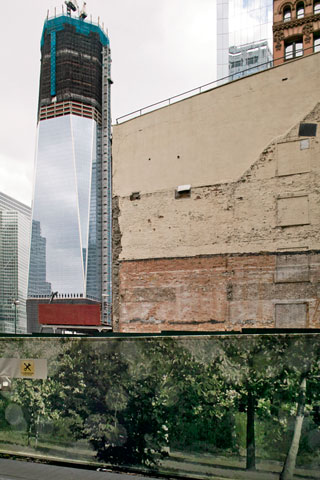
Cedar Street — Brian Rose
From Zucotti Park I walked a short distance down Cedar Street and came to Greenwich with its sweeping view of the construction of the WTC. Dozens of visitors were lined up to enter the 9/11 memorial–which requires obtaining a ticket. I had a long chat with a police officer, a young Asian cop assigned to the WTC who was interested in my project. I did a few photos here before finishing for the day. One World Trade Center is now at least 2/3 of the way up.
